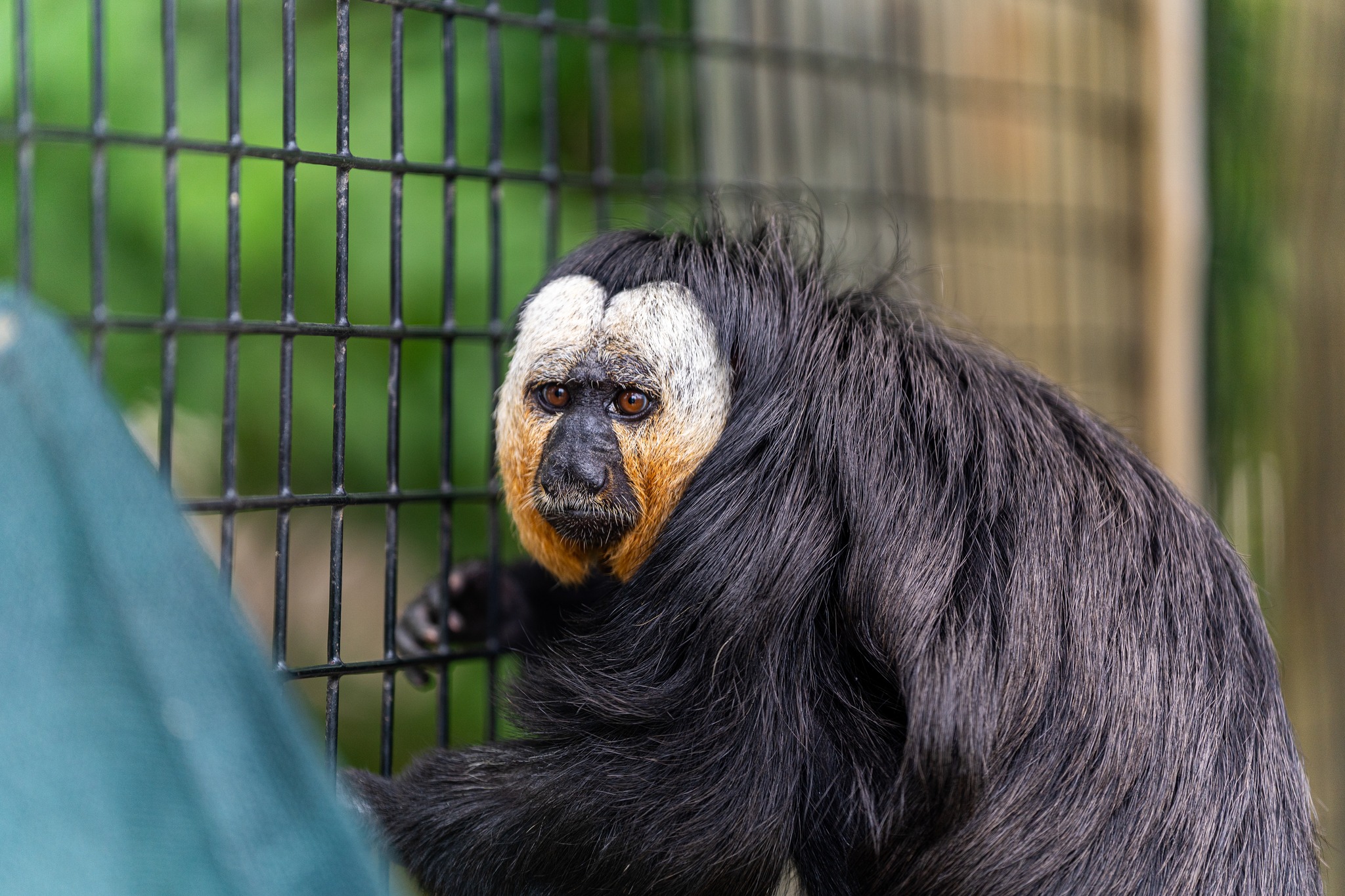Much of the diet of the white-faced saki includes seeds. They are critical to the environment for the purpose of seed dispersion.
I LIVE IN SOUTH AMERICA
Saki monkeys live in tropical rain forests of southern and eastern Venezuela, Guyana, Suriname, French Guiana, and northeastern Brazil.
I AM AN OMNIVORE
This species’ diet primarily includes fruit, seeds, leaves, and flowers. They will occasionally eat small mammals and birds.
WHITE-FACED SAKI MONKEYS ARE SOLITARY
Saki monkeys are usually seen alone or in pairs. However, they sometimes will live in groups of up to twelve. They are arboreal, meaning they spend their lives in the trees and rarely come to the ground.
AWESOME ADAPTATIONS
Only male saki monkeys have white faces, while females have dark faces. Their fur is thick, coarse, shaggy, and long which protects them from the weather in the rain forest. Their lower front teeth are specialized for opening nuts and tough fruits in order to obtain the large nutritious seeds hidden within. This allows them to eat unripe fruit not palatable to most primates.
HELPING THE WHITE-FACED SAKI MONKEY IN THE WILD
The white-faced saki monkeys at the Fort Wayne Zoo are enrolled in the Species Survival Plan (SSP). SSP is a program implemented by the Association of Zoos and Aquariums (AZA) to help ensure a genetically viable population exists.

